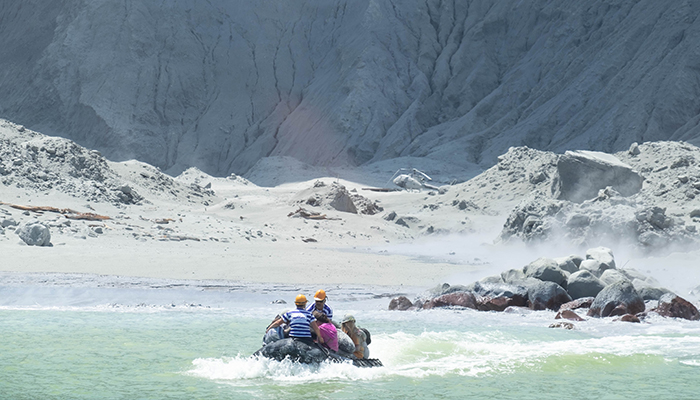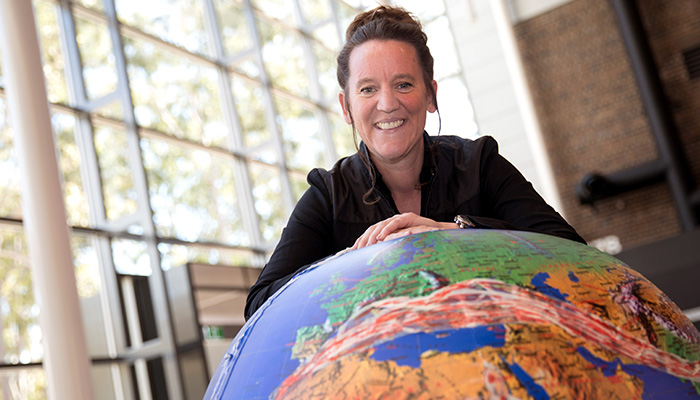Forty-seven people were on Whakaari/White Island, a popular tourist destination, when the disaster happened at 14:11 local time.

Terrible tragedy: The eruption at Whakaari/White Island, in the Bay of Plenty, sent plumes of ash, steam and rock 12,000ft into the air. Credit: Michael Schade/Twitter.
At the time of writing, New Zealand authorities have confirmed that six people have died, while eight others are feared missing on the island, presumed dead. About 30 people were rescued, with most of them being treated in hospital for serious injuries.
Although the Volcanic Alert Level for Whakaari/White Island had been increased to two (on a scale of five) before the eruption, this indicated only moderate to heightened volcanic unrest – there was no evidence to suggest that the volcano had moved into an eruptive phase.
Although our knowledge of volcanoes and of the precursors leading to eruptions is constantly improving, we must acknowledge the unpredictable nature of these complex systems.
GNS Science, who closely monitor the volcano, last week stated that “observations and data to date suggest that the volcano may be entering a period where eruptive activity is more likely than normal”. But what does this mean?
Volcanic alert levels fluctuate and an increase in alert level does not necessarily indicate that an eruption will occur. New Zealand's alert levels do not reflect the magnitude or style of a future eruption, or indicate when it may occur.

Deadly eruption: About 30 people were rescued from Whakaari/White Island in the immediate aftermath of the explosion, with some tourists pictured being evacuated by boat. Credit: Michael Schade/Twitter.
Volcanoes such as Whakaari/White Island are unpredictable because magma (the molten rock material that originates under the Earth's crust) is close to the surface. Heat and gas from the magma can cause super-heated water in hydrothermal systems to expand rapidly into steam causing a hydrothermal or phreatic eruption. These eruptions can be triggered by just a slight disruption – a small earthquake or an input of gas from below the volcano – and can therefore occur with little or no warning.
- Get out now: Why Sydney’s first catastrophic fire warning will save lives
- Fastest star's incredible escape from the galaxy's black heart
Phreatic eruptions are typically small compared to eruptions involving large amounts of fresh magma; however, the impacts are still catastrophic close to the source of explosions. A similar phreatic eruption occurred in 2014 at Mount Ontake, Japan, killing 63 hikers and tourists.

No warning: Helicopters on the island were destroyed by falling rock and ash. Credit: Michael Schade/Twitter.
GNS Science have described the Whakaari/White Island eruption as "an impulsive and short-lived event". It immediately increased the Volcanic Alert Level to four, and has since decreased it to level three, adding: "Over the next 24 hours we still estimate an equal likelihood of either no eruption or a smaller/similar-sized eruption that would impact the main crater floor."
Although our knowledge of volcanoes and of the precursors leading to eruptions is constantly improving, we must acknowledge the unpredictable nature of these complex systems. Advanced monitoring and modelling may give us some time to prepare for a major eruption, but we may always be surprised by the timing (but not occurrence) of these smaller eruptions.
- Dr Christina Magill is an academic in the Department of Earth and Environmental Sciences, whose research is focused on natural hazard risk assessment.



